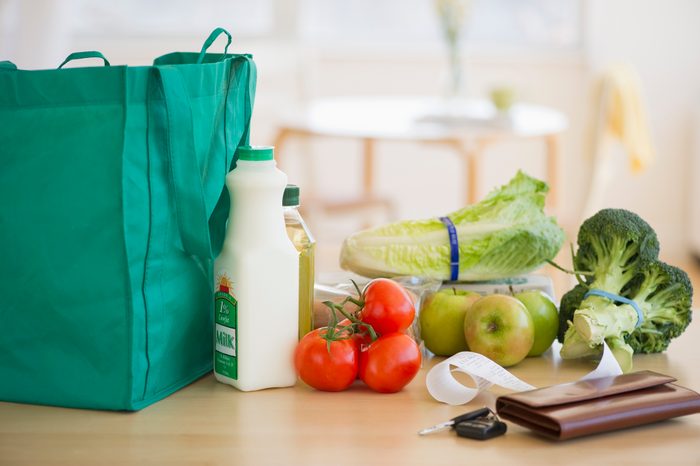
Keep your produce fresh
Americans who eat lots of fruits and vegetables are actually the most wasteful. According to the research published in Plos One, people in America waste about a pound of food per person each day. Keep your food fresh and reduce waste with these storage tips.
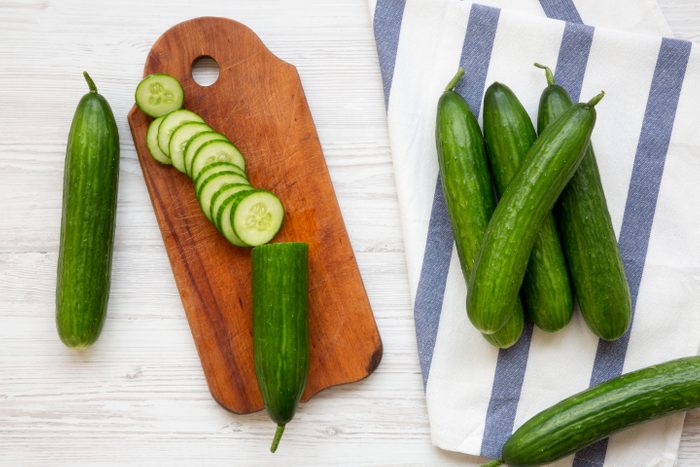
How to store cucumbers
Many fruits, such as tomatoes, bananas, and melons, produce ethylene gas, a ripening agent that speeds up spoilage. Cucumbers are super sensitive to this ethylene gas, so they need their own place or they’ll spoil faster. They’re actually more suited to hanging out on the counter than in the crisper drawer with off-gassing fruits, according to the American Heart Association, but if you want cold cucumbers, you can store them for a few days in the fridge (away from fruits). (These 15 supermarket foods literally last for years.)
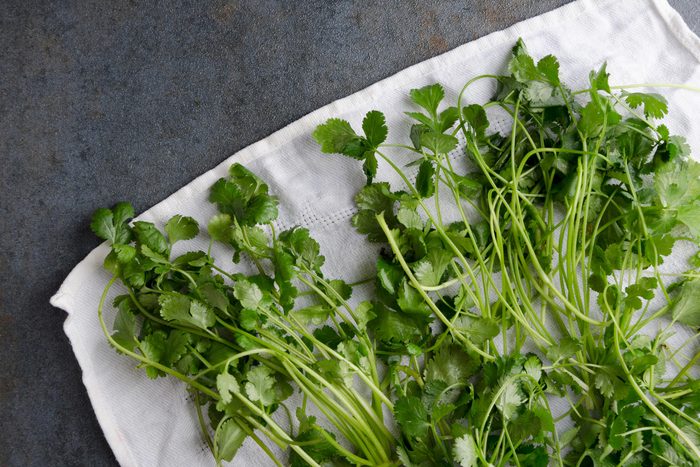
How to get herbs to last longer
If you’re trying to cut back on salt or just add more flavor to your food, fresh herbs fit the bill, but don’t just toss them in the fridge. “Store fresh herbs just as you would fresh cut flowers,” says Dana Tomlin, Fresh Manager at Wheatsville Food Co-op in Austin, Texas. First, make sure the leaves are completely dry. Next, snip off the ends and place the herbs, stem down in a cup or mason jar with water. Most herbs do well when stored this way in the fridge. Basil, however, likes to hang out at room temperature. You’ll still want to place it in a jar with water though. When the water gets yucky, drain and add fresh water. Most herbs stored this way are good for up to two weeks.
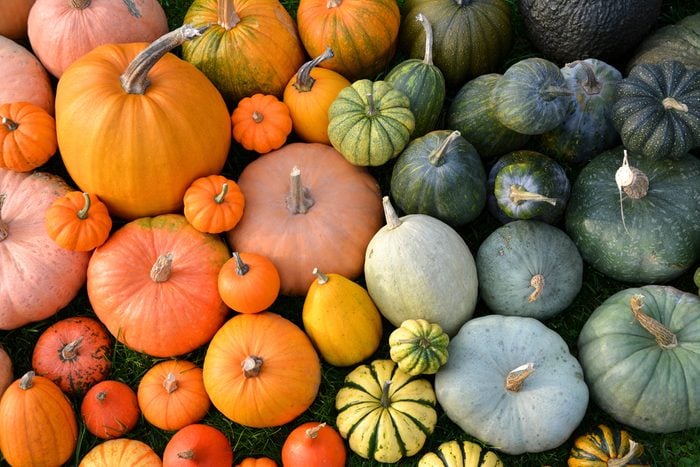
Don’t store squash and pumpkins with apples and pears
Squash and pumpkins are well known for having a long shelf life but apples, another fall favorite (along with pears and other ripening fruit) shouldn’t be stored with them. Why? According to Oregon State University Extension Service, it will cause the squash to yellow and go bad. Squash and pumpkins keep well at temps between 50 and 55 degrees Fahrenheit, which is cooler than room temperature but not as chilly as the fridge. Larger pumpkins and larger squash will last up to six months, but keep an eye on the smaller ones, as they usually last about three months.
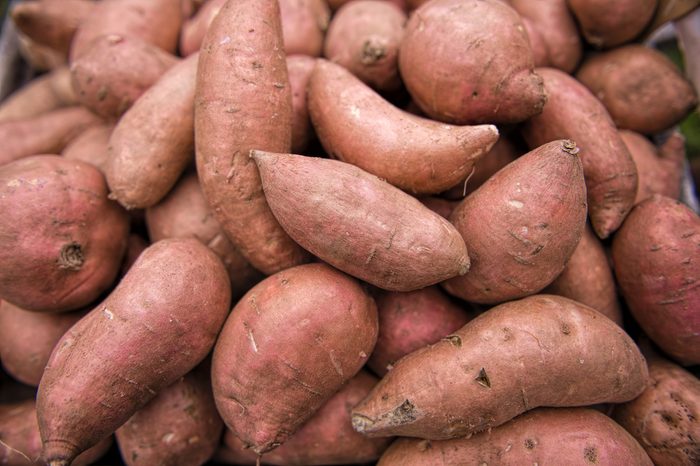
Get your root veggies to last longer by bagging them
Root vegetables such as carrots, yams, kohlrabi, beets, and onions are some of the most nutrient-dense veggies we can eat since they absorb nutrients from the soil. To retain those good nutrients, store root vegetables in a cool, dark, and humid place. A root cellar is ideal, but most of us don’t have one. The next best option is to place the veggies in a paper or plastic bag in the crisper. If you just toss them in the fridge—even in the crisper, they’ll soften and rot a lot quicker.
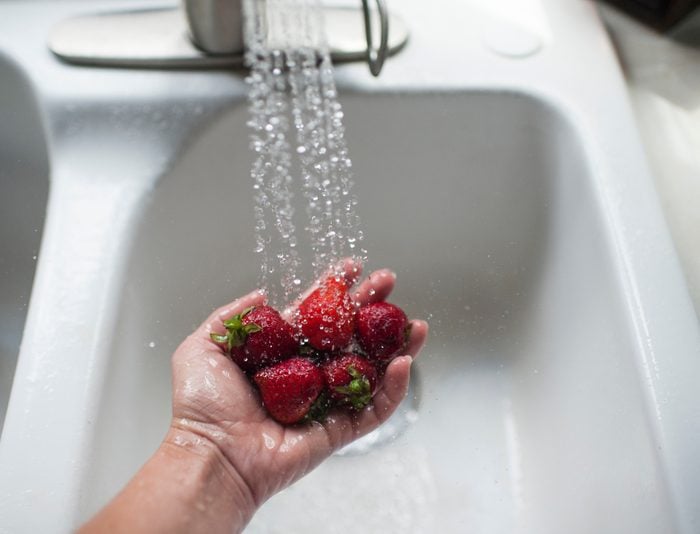
A vinegar rinse makes your berries last longer
Berries are delightfully sweet and easy to eat. The problem is, they can get moldy quickly if not stored properly. The culprit is tiny mold spores that want to make the little nooks and crannies of the berry skin their home. Tomlin says the first rule is to avoid washing them until you’re ready to eat them because moisture equals mold. Here’s what to do if you accidentally eat mold.
What if you just brought home a Costco-size carton of berries and won’t be able to eat them all right away? You can extend their life a couple of days by taking a few minutes to give the berries a bath in a solution of one cup vinegar to three cups water. Let them soak briefly; then gently rinse in a colander. The vinegar will hinder the mold growth.
Since berries don’t do well sitting wet, make sure to dry them thoroughly—lay them out on a paper towel and gently blot (or put a few paper towels in your salad spinner and dry them that way. Store the berries loosely in a container that is ventilated, or leave the lid partially opened.
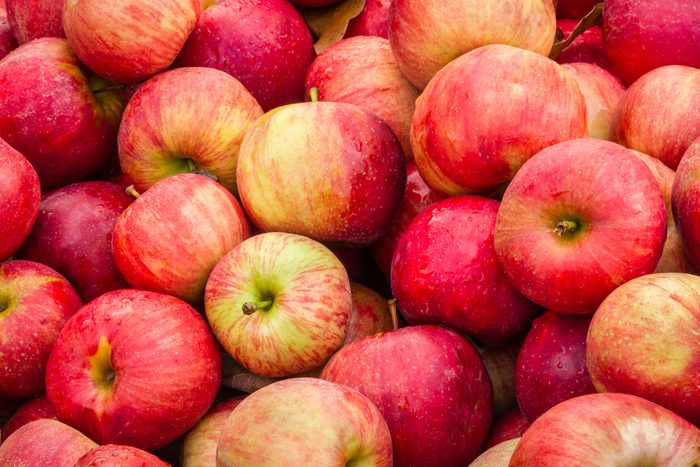
Store your apples away from oranges
Sometimes, we can’t just all get along. That’s the case with apples and oranges—trusted fruit bowl staples in still life paintings but frenemies in fridge life. Fruits give off a gas called ethylene, the ripening agent that will lead to faster spoilage of the produce around it, says Matthew Robinson, creator of The Culinary Exchange and author of Knickerbocker Glory: A Chef’s Guide to Innovation in the Kitchen and Beyond. Store apples in the fridge if you want to extend their shelf life. Oranges stored in the fridge (away from apples) should be placed in a mesh bag so that air can circulate around them. Plastic bags will only make oranges moldy.
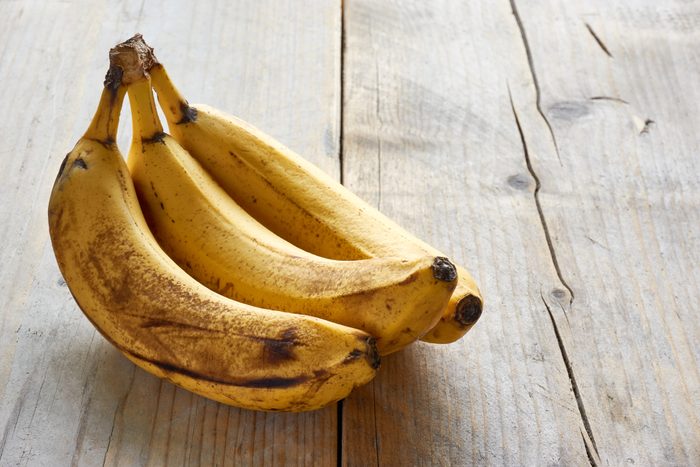
Separate your bananas to get them to last longer
Banana hooks may show off bananas in their best light but the problem is, they will all ripen the same time, which means you’re either eating bananas for two days straight or tossing the rotting ones. Here’s a solution: Break up the bunch. Keep some in the fruit bowl on the counter to ripen and store others bananas in the fridge to delay the ripening process. If you missed your chance and you’ve got a glut of spotted bananas, use them in banana bread or toss them in the freezer to make banana “ice cream.”
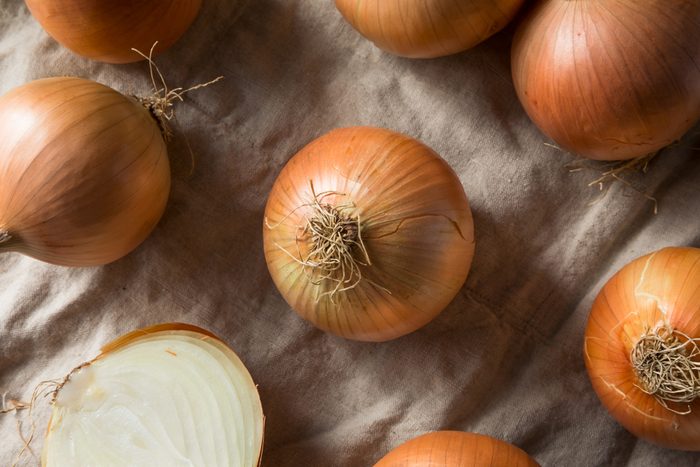
Don’t store onions with potatoes
Fried potatoes and onions are a delish combo but don’t store them together before you cook them, as the onions will cause the potatoes to go bad. “It’s best to store items like potatoes and squash in an open-air wicker basket in a cool, dark place to preserve freshness,” says Tomlin. “You can store them in a paper bag, but just make sure they’re in a container where moisture or condensation can’t build up, which would make them soften and go bad faster.” A friendly neighbor for onions is garlic. They can be stored near each other without ripening or spoiling. Just store them in a well-ventilated space, and keep the paper-like skin of the garlic intact until use. Here are the 13 foods you should never eat past the expiration date.
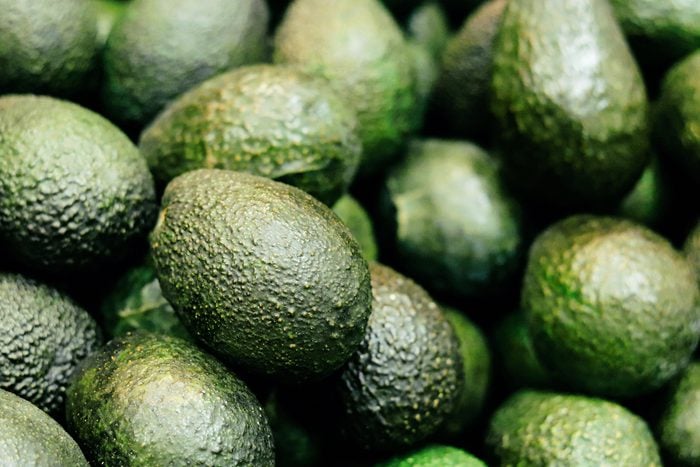
Ripen avocados next to bananas
According to the 2019 survey conducted by Pollock Communications and the trade publication Today’s Dietitian avocado is number two on the list of the Top 10 Super Foods for 2019. Since avocados can be pricey, it’s important to store them correctly. “If your avocados are under-ripe, store them next to bananas. The gasses released from the bananas promote ripening,” says Tomlin. “If you need to extend the life of an avocado, store it in the refrigerator. It will slow the ripening process significantly.” For times you get a hankerin’ for a little sliced avocado on a sammie but can’t eat the whole thing, Tomlin suggests storing the cut avocado with the seed intact in an airtight container along with a sliver of an onion.
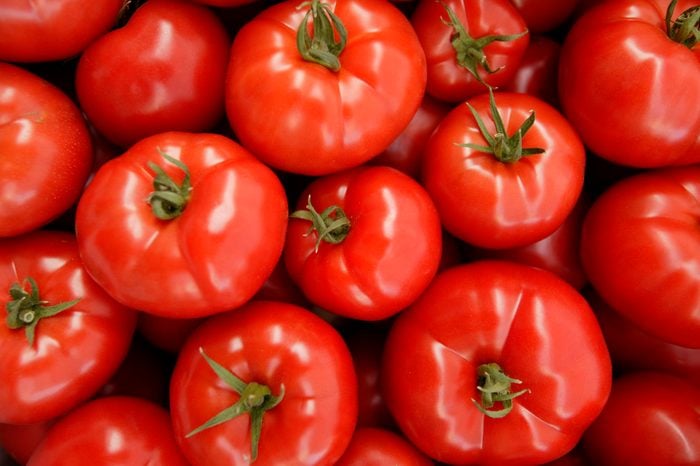
Don’t store tomatoes in the fridge
A freshly picked garden tomato is undeniably delicious, but time in the fridge can make it mushy and bland-tasting. According to the Academy of Nutrition and Dietetics, tomatoes shouldn’t be stored in the fridge. Instead, store at room temperature to preserve their flavor.
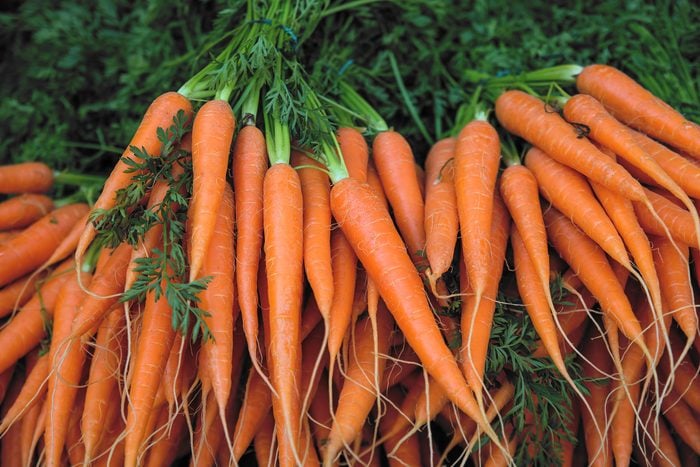
Store cut carrots, celery, and, asparagus in water
Peanut butter on a crunchy stalk of celery is a snack that has stood the test of time (especially if you put raisins atop the peanut butter), but limp celery—not so much. Storing it in plastic is a no-no. The ethylene gas it produces has nowhere to go. Wrap the celery tightly in foil and after each use, re-wrap it snug. Or if you want grab-n-go celery, cut it up into sticks and submerge them in water in an airtight container. The same water bath works for cut-up carrot sticks and asparagus. Keep the rubber bands around the stems and cut off the fibrous ends. They are pretty tough and not tasty anyway. Place them in a tall drinking glass with enough water to cover an inch of asparagus. Avoid getting sick this winter with these foods that help prevent colds and flu.
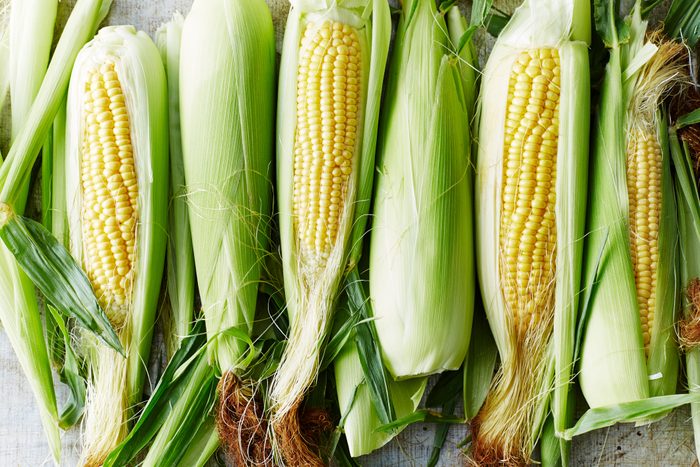
Store corn in the front of the fridge
The best way to enjoy this sweetheart of summer is to eat it fresh for maximum sweetness. If you must store it for a short time, you can place it in the fridge. “Keep ears cool in your refrigerator with the husks on to keep in moisture,” says Tomlin. Don’t wrap the corn in a plastic or paper bag. If possible, store them toward the front of the fridge where it’s slightly warmer. “Corn will dry out and get starchy if it’s kept too cold because there’s not enough humidity to keep the kernel plump,” says Tomlin.

